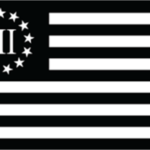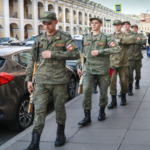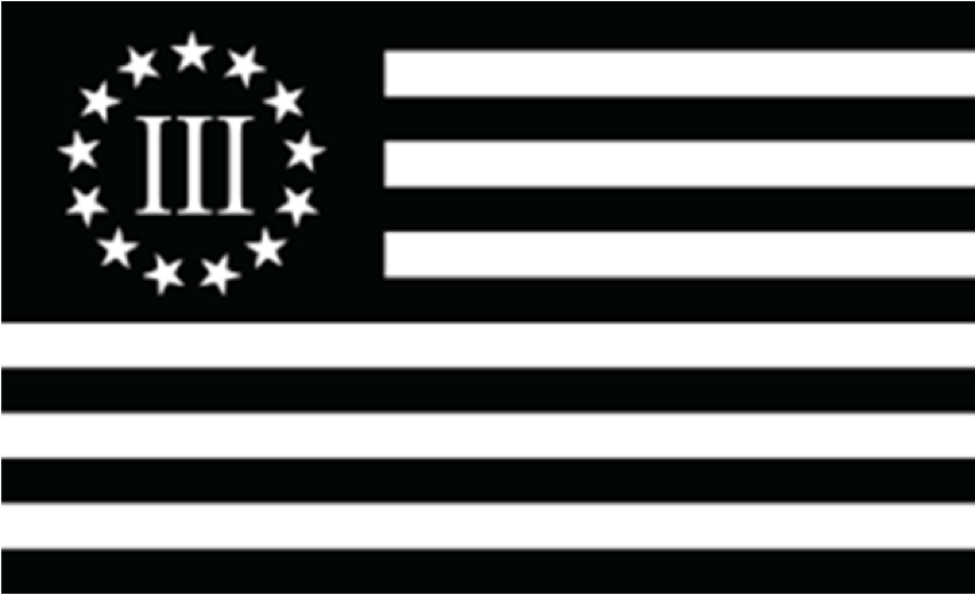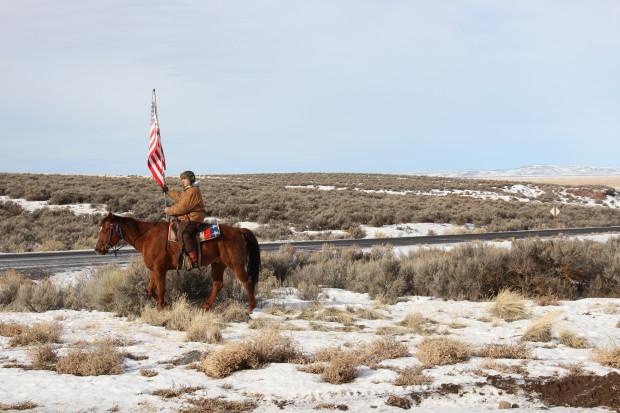America’s Antifascist Movement, ‘Antifa’
Written by: Sarah Geesaman
T
hough recently designated a terrorist organization by the FBI and Homeland Security, the growing Antifa movement is not so much an organization as it is a label adopted by diverse, localized groups of left-wing radicals seeking to combat perceived racist ideology on a national scale. Antifa – short for antifascism – has been present in the United States for nearly three decades.1 But it was not until then-presidential candidate Donald Trump’s contentious run for office began to gain traction in 2015 that Antifa began to push itself into the national spotlight.6 Endorsements from white nationalists and the KKK triggered widespread criticism of the Trump campaign, leading some leftist activists to conclude that contemporary circumstances necessitated a counteroffensive against fascist ideology. With Antifa chapters shutting down public speeches of widely recognized right-wing speakers, such as Milo Yiannopoulos and Mick Cernovich, and clashing with neo-Nazi and white nationalist groups in Charlottesville, Portland, and Berkeley, many Americans find themselves wondering, ‘Who are Antifa, and for what do they stand?’2 3
While many local Antifa chapters share similar ideology, the absence of any nationalized organizational structure eliminates any guarantees of ideological consistency across the movement. Many Antifa members are disgruntled young voters hoping to confront the hate-based extremist rhetoric of white nationalists and neo-Nazis across the country.4 Though left-leaning, Antifa does not align with the Democratic Party platform.4 Antifa members often decry capitalism and authoritarianism, and reject the traditionally liberal notion that all beliefs, no matter how extreme they may be, deserve to be heard.1 2 5 Some Antifa believe that a group of elites control the government and news media.5 While the beliefs of individual Antifa members may vary, Antifa activism often centers around opposing fascism in all forms, and denying identified fascists a place to air their thoughts in a public forum.2 Despite this fairly simple platform, antifascists struggle to protect the internal integrity of Antifa ideology. As prominent leftist website It’s Going Down warns, “Some people use the Antifa name as a way to promote their specific political views …If someone is more interested in recruiting people to their own group than doing anti-fascist work, get rid of them. Same with someone who seem to be interested in being publicly identified as antifa so they can gain public acclaim. Real antifa strive to remain anonymous—that’s what the masks are for!”8
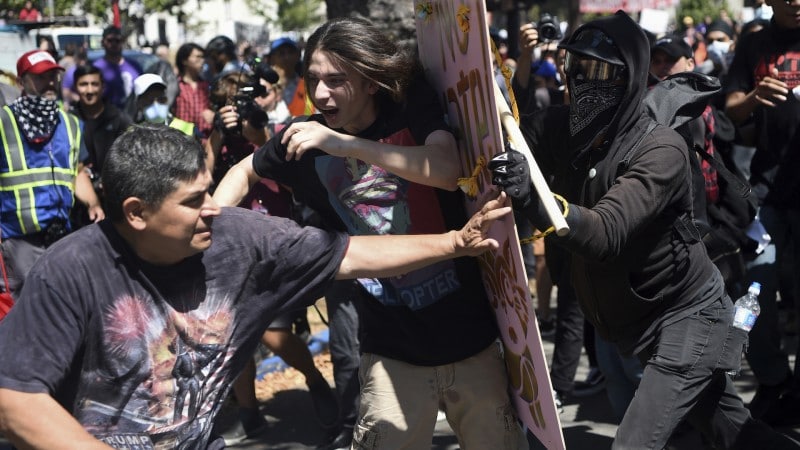
Antifa counterprotestors clash with right-wing protestors on Aug. 27 in Berkeley, CA © Washington Post
Active Antifa chapters may employ a diverse set of tactics to deny fascism a platform in the public forum. Though Antifa is most well-known for its violent altercations with white nationalists in Charlottesville and Sacramento, such activities only account for a fraction of Antifa’s work.2 Local Antifa chapters typically establish an online social media presence, useful for recruiting and informing purposes. Almost immediately upon formation, these chapters begin monitoring local individuals known to be or suspected of being fascists.8 In an effort to combat fascist ideology, Antifa engage in a practice known as doxxing, which consists of “identifying neo-Nazis and like-minded individuals and disseminating that private information to the public and employers to discourage people from joining their ranks.”1 Antifa may also offer self-defense training to members of the public, conduct demonstrations in areas where white nationalists, neo-nazis, and other fascists are expected to be, remove fascist literature from public spheres, set up tables at public events to recruit new members, and shut down events where perceived fascists are expected to feature as speakers.8
Antifa does not see fascist speech as protected speech. Though free speech is almost universally celebrated in the U.S., Antifa does not believe free speech protections ought to extend to fascist speech which appears, on its face, discriminatory. As longtime antifascist organizer Scott Crow put it, “The idea in Antifa is that …hate speech is not free speech. That if you are endangering people with what you say and the actions that are behind them, then you do not have the right to do that. And so we go to cause conflict, to shut them down where they are, because we don’t believe that Nazis or fascists of any stripe should have a mouthpiece.”4Particularly concerning to Antifa are instances in which the public seems more concerned by the alleged violations of a fascist’s free speech than they are by the projected violence which fascist ideology perpetuates.1 They reject entirely the notion that fascism is “worthy of open debate and consideration.”2
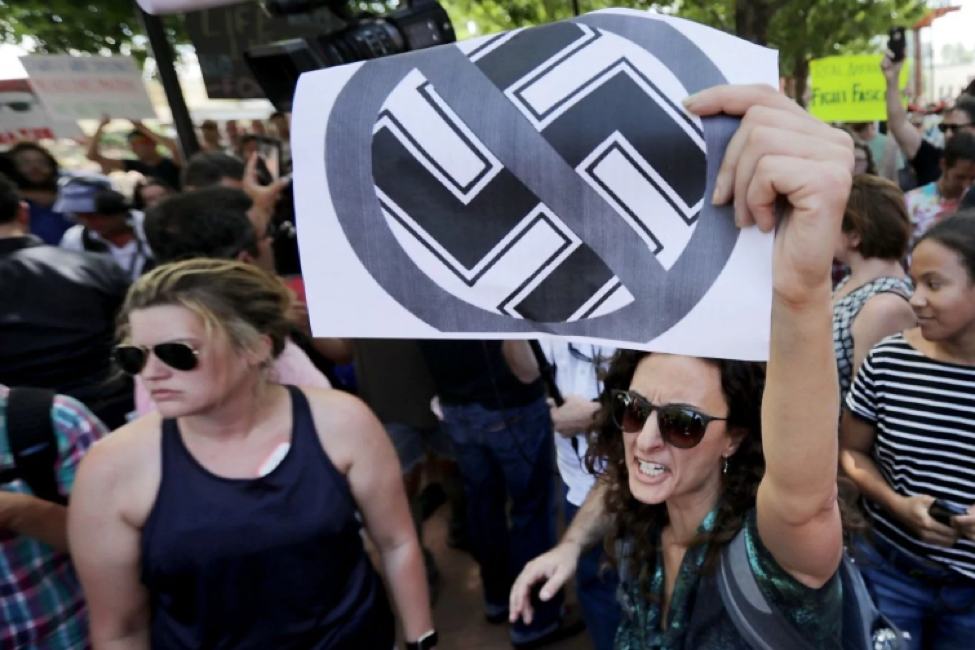
Unmasked and unarmed Antifa protesters. © Getty Images
Though some Antifa chapters engage in violent activities, the Antifa movement is not a monolithic entity that broadly endorses the use of public violence as a means of political resistance. Antifa have been observed smashing windows, setting fires, throwing things at police, fighting right-wing protesters, calling for the assault of female journalists, and even punching white nationalist Richard Spencer in the face during a TV interview, but few, if any, Antifa would identify their tactics as militant violence.1 3 6 Many label their violent actions as a form of self-defense which necessity dictates they must engage in for their own self-preservation.1 Rose City Antifa, the oldest Antifa group in the U.S., states on its public Facebook page, “We are unapologetic about the reality that fighting fascism at points requires physical militancy. Anti-fascism is, by nature, a form of self-defense: the goal of fascism is to exterminate the vast majority of human beings”,1 and Crow notes that, “There is a place for violence.”4 While he admits that a world of violence is not ideal, he argues that sometimes it is necessary to use violence in order to push back against a greater violence.4 Violence is now seen by some Antifa members as a way to gain national attention and make a name for their movement.4Despite these strong opinions, not everyone agrees about the use of violent tactics. Some argue that they ought not to be employed because they “endanger people … who are not given an opportunity to say if they should be used or not.”5
The Antifa movement is not a monolithic entity that broadly endorses the use of violence as a means of ideological resistance.
Though Antifa’s activities are not inherently violent in nature, officials fear that the increasing prominence of nationalist and fascist ideology in the U.S. will only push Antifa to new extremes. Antifa rose up primarily in response to a surging nationalist movement which was emboldened by the political success of President Donald Trump.6 In 2017, SPLC identified some 130 Ku Klux Klan (KKK) chapters, 100 white nationalist organizations, and 99 neo-nazi groups within the U.S.5 Many previously moderate leftists now believe that the rise of racist activity in the U.S. demonstrates a severe need for militarization and mass-mobilization, and although the lack of any centralized Antifa body makes calculating the movement’s membership nearly impossible, Antifa’s ranks and activities certainly appear to have increased substantially in recent years.5 6 The apparent correlation between increasing nationalism and Antifa violence concerns some U.S. security officials, who anticipate continued escalation.9 10
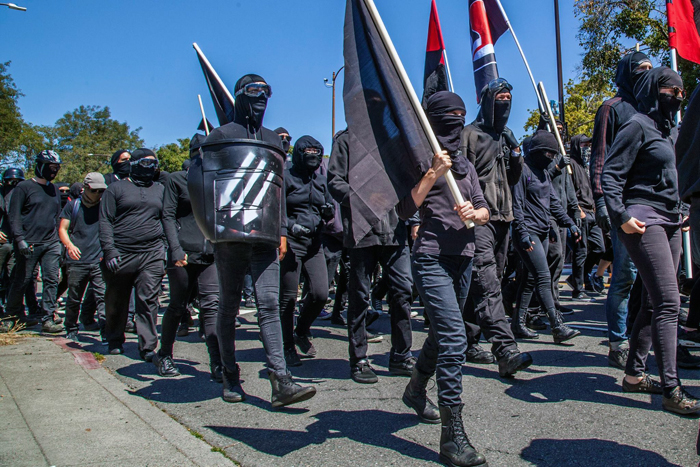
Antifa activists in typical garb.
1. Doug Stanglin, “What is antifa and what does the movement want?” USA Today, 23 August 2017, https://www.usatoday.com/story/news/2017/08/23/what-antifa-and-what-does-movement-want/593867001/.
2. “No platform for fascism: A Q&A with Antifa author Mark Bray”, Melville House, 22 August 2017, https://www.mhpbooks.com/no-platform-for-fascism-a-qa-with-antifa-author-mark-bray/.
3. Caleb Parke, “Antifa, students protest Cernovich, reportedly harass female reporter at Columbia University,” Fox News, 1 November 2017, http://www.foxnews.com/us/2017/11/01/antifa-students-protest-cernovich-reportedly-harass-female-reporter-at-columbia-university.html.
4. Jessica Suerth, “What is Antifa?” CNN, 17 August 2017, https://www.cnn.com/2017/08/14/us/what-is-antifa-trnd/index.html.
5. Patrick Strickland, “U.S. anti-fascists: ‘We can make racists afraid again’,” Aljazeera, 21 February 2017, http://www.aljazeera.com/indepth/features/2017/02/anti-fascists-racists-afraid-170221100950730.html.
6. Malte Rohwer-Kahlmann, “Antifa rise to prominence in Donald Trump’s United States,” Deutsche Welle, 6 October 2017, http://www.dw.com/en/antifa-rise-to-prominence-in-donald-trumps-united-states/a-40847466.
7. Caleb Parke, “Antifa Apocolypse? Anarchist group’s plan to overthrow Trump ‘regime’ starts Saturday,” Fox News, 3 November 2017, http://www.foxnews.com/us/2017/11/03/antifa-apocalypse-anarchist-groups-plan-to-overthrow-trump-regime-starts-saturday.html.
8. “Forming an Antifa Group: A Manual,” It’s Going Down, 16 February 2017, https://itsgoingdown.org/forming-an-antifa-group-a-manual/.
9. Lucy Pasha-Robinson, “Antifa: U.S. security agencies label group ‘domestic terrorists’,” Independent, 3 September 2017, http://www.independent.co.uk/news/world/americas/antifa-domestic-terrorists-us-security-agencies-homeland-security-fbi-a7927881.html.
10. Josh Meyer, “FBI, Homeland Security warn of more ‘antifa’ attacks,” Politico, 1 September 2017, https://www.politico.com/story/2017/09/01/antifa-charlottesville-violence-fbi-242235.
Photo Credit:
Antifa activists in typical garb | http://www.crmvet.org/disc/17antifa.htm
Antifa counterprotestors clash with right-wing protestors on Aug. 27 in Berkeley, CA © Washington Post | https://www.washingtonpost.com/news/morning-mix/wp/2017/08/28/black-clad-antifa-attack-right-wing-demonstrators-in-berkeley/?utm_term=.3b7951c2f409
Unmasked and unarmed Antifa Protestors © Getty Images | https://www.washingtonpost.com/news/made-by-history/wp/2017/08/16/who-are-the-antifa/?utm_term=.5a3221836438

